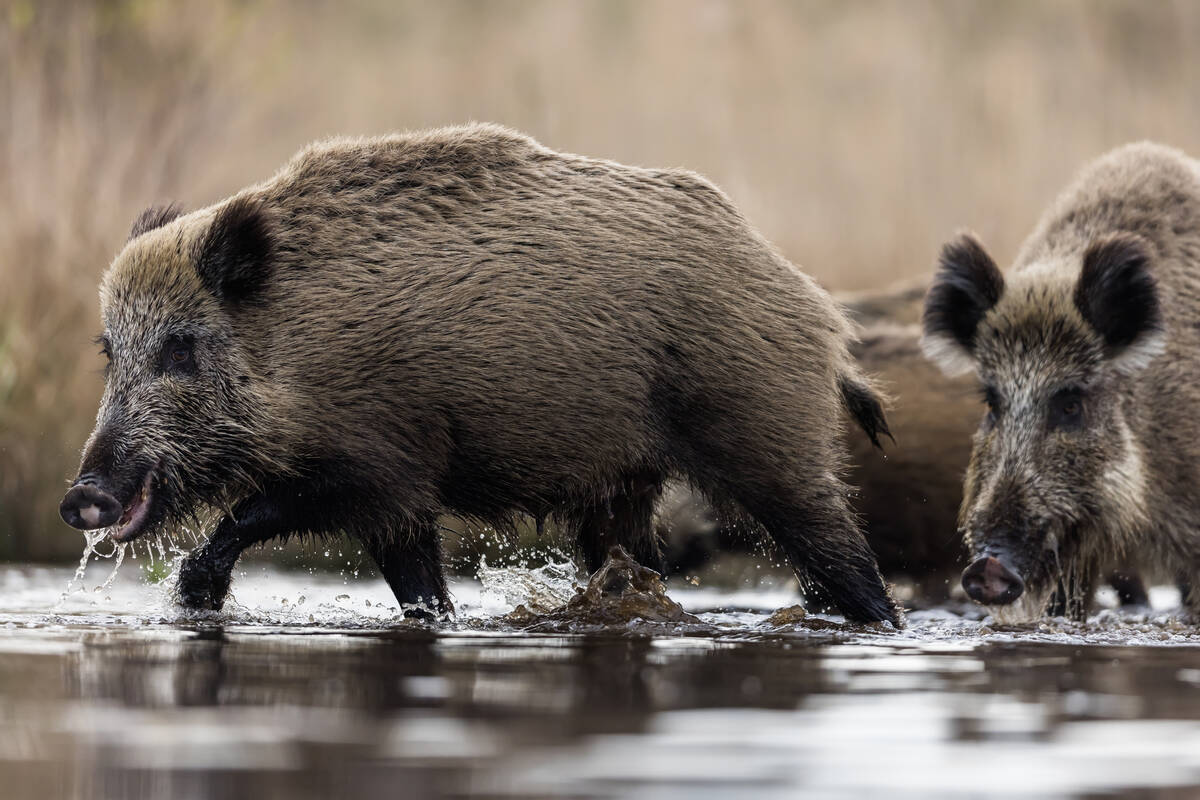Proactive measures | Producers should identify risks and establish risk tolerances
Biosecurity was not something a lot of bison producers worried about in the past.
Bison herds had roamed wild and free and most who began raising them on their farms did so because they required less management.
But the past several years have seen a change in attitude about the importance of biosecurity measures on farms, between farms and at feedlots, said Murray Woodbury, the specialized livestock health and production research chair at the Western College of Veterinary Medicine in Saskatoon.
He said there has been a wide spectrum of producers emerging within the industry from those who want to maintain the historical integrity of bison to those who are into large-scale ranches and feedlots and more intensive management.
Read Also

Manitoba bans wild boar possession
Manitoba has tightened the regulatory status of Eurasian wild boar in an effort to help fight back against invasive wild pigs.
The cost of disease can become significant, regardless of where a producer is on the spectrum.
Keeping disease off the farm in the first place is critical.
“A lot of it is just common sense,” Woodbury told producers at the Canadian Bison Association annual convention Nov. 18 in Regina.
Producers should identify what risks their bison face and establish their own risk tolerance.
Those who say they have closed herds likely don’t. Vehicles, visitors and feed all make their way to farms and present risk. As well, there are risks within the herd.
“Usually calves are born healthy and acquire disease from older animals, other animals, contaminated feed and equipment” and other things in the environment, Woodbury said. “Keep the young away from the old. Calve in a clean, dry location. Limit the intensity of animal contact.”
Other things producers can do to keep disease risk low include limiting pen movement and cattle density and keeping healthy animals away from the sick.
“Hospital pens are hospital pens,” he said.
He also reminded producers to dispose of dead stock as soon as possible, except in the case of anthrax when disturbing the carcass could cause more disease.
Coyotes could feed on carcasses and spread neospora, a highly transmissible disease that causes abortions, through their feces. The same transmission could occur if coyotes get into feed sources and defecate.
Woodbury said other wildlife is a source of concern and should be watched. Deer can carry Johne’s disease, mice carry salmonella, flies cause pinkeye and close proximity to sheep can cause malignant catarrhal fever.
Wildlife can also pose risks to water, and he recommends that a clean trough or pipeline system be used to ensure quality water.
The risk between farms is mainly due to moving animals on and off farms. Most disease is transmitted from the newly acquired animals to the resident animals, not older to younger as it would within a farm, he said.
“Purchase your stock from preferred buyers who have a preventative health and biosecurity plan,” Woodbury said.
Producers should inspect the animals coming to their farms or have their veterinarians do it, and they should ask questions about herd health status, vaccinations and treatment.
In a feedlot situation, Woodbury said animals should be inspected upon arrival and placed into either a soft quarantine in adjacent pens or a hard quarantine in isolation for a time.
Fences should be maintained both inside the feedlot and along the perimeter to ensure animals don’t escape or mix.
Operators should keep a record of the movement and removal of manure.
“And don’t use the same equipment to handle feed,” he said.
Continual risk management is a reality in the livestock business, Woodbury said.
“Nothing is perfect,” he said.















